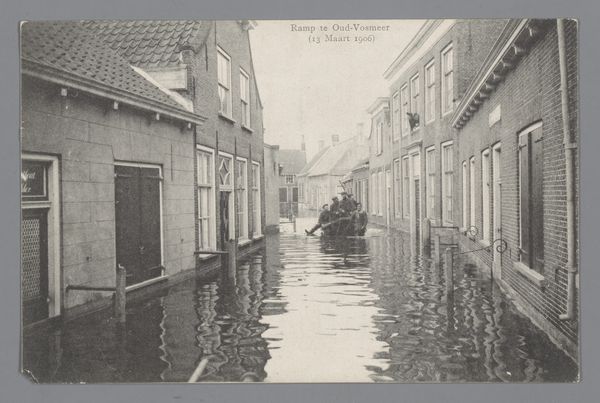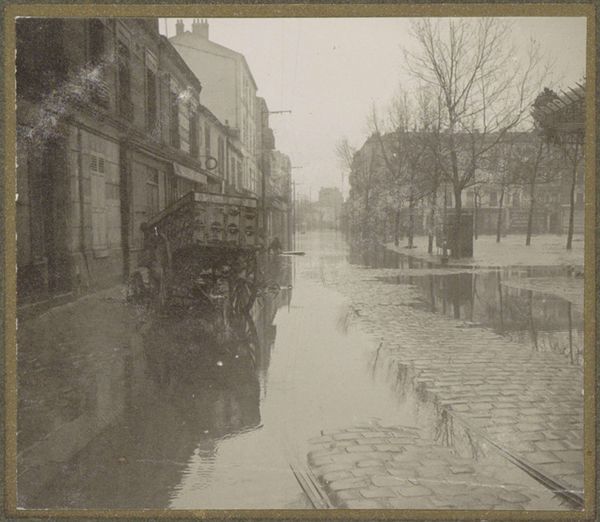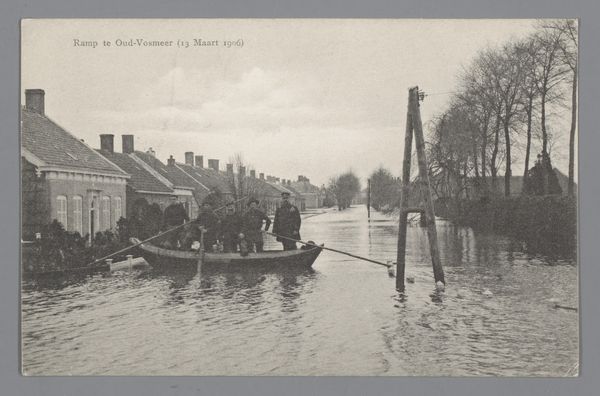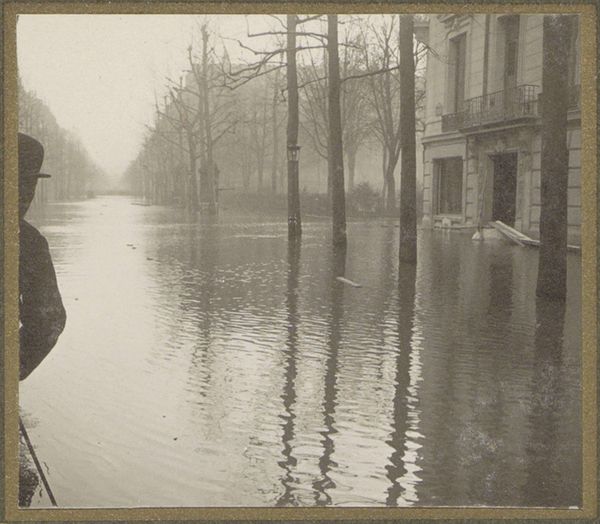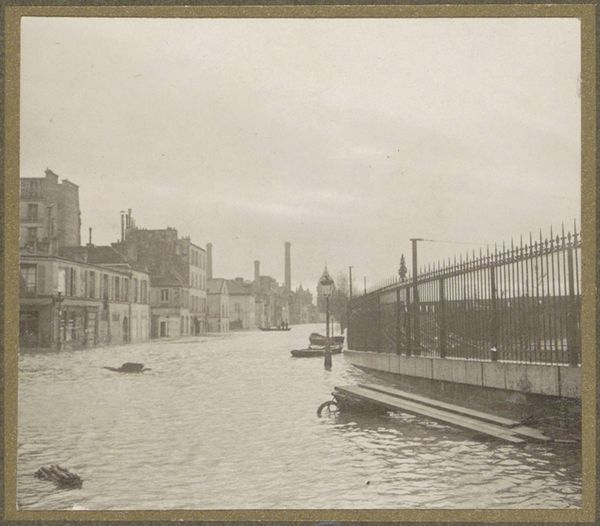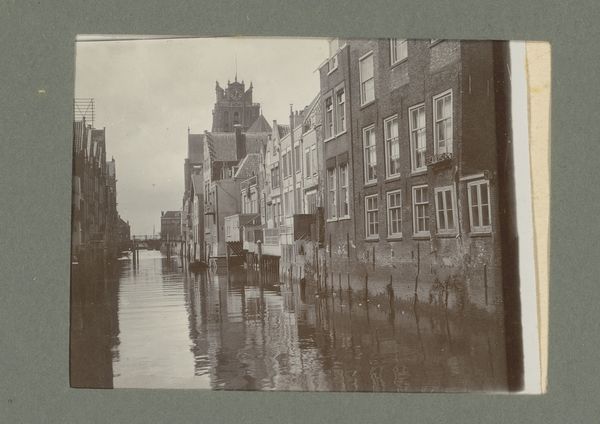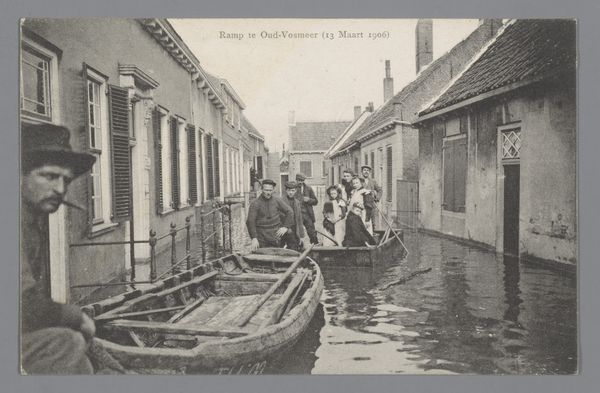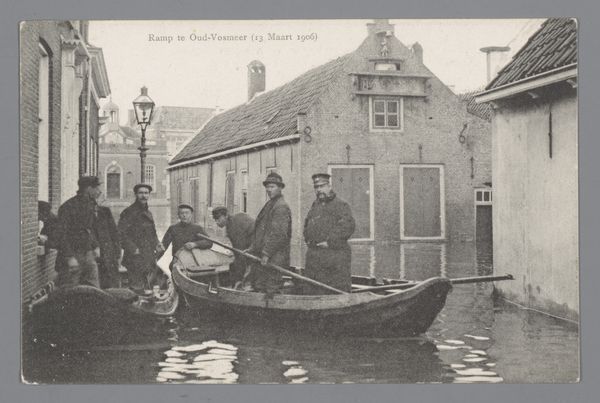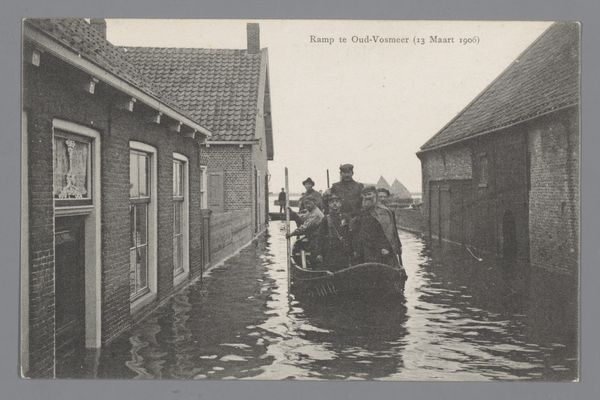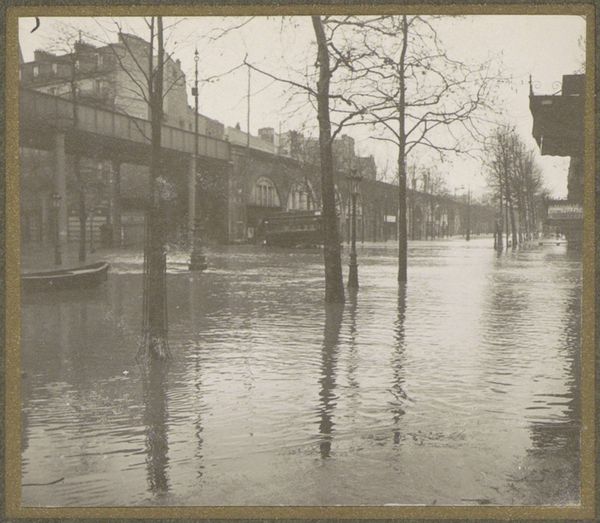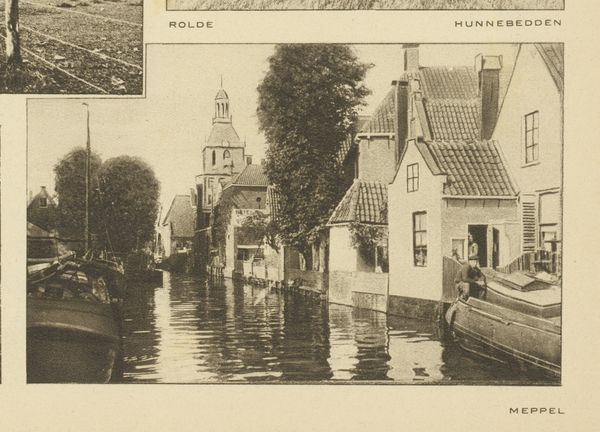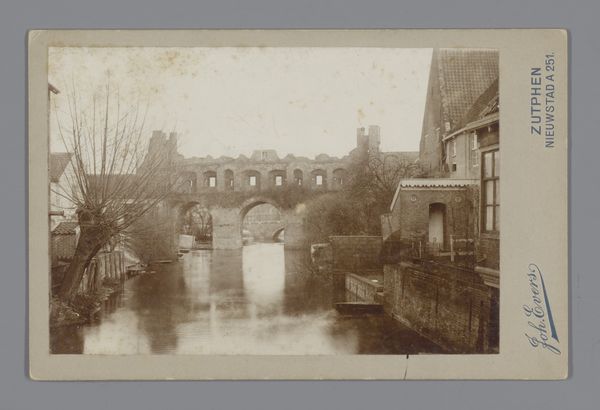
photography, gelatin-silver-print
#
16_19th-century
#
landscape
#
photography
#
gelatin-silver-print
#
19th century
#
cityscape
#
paper medium
#
realism
Dimensions: height 9 cm, width 14 cm
Copyright: Rijks Museum: Open Domain
Editor: Here we have “Ramp te Oud-Vossemeer op 13 maart 1906,” a gelatin silver print from 1906 by the Gebroeders van Straaten. The photograph's gray scale and high contrast make the flood feel both surreal and unsettling. What visual cues stand out to you? Curator: Note how the composition guides the eye through the flooded street. The receding lines of the buildings create a rigid geometry which is reflected in the water, juxtaposed by the lone figure, who offers a central focal point. Do you see how the materiality of the gelatin silver print—the tonality and range—accentuates the harsh reality of the flood? Editor: Yes, the stark contrast gives a feeling of detachment from the event, as if looking at it through time. What about the architecture? Is there a significance to its forms? Curator: Absolutely. The architecture speaks volumes through its symmetrical facades, portraying order amid chaos, particularly within its repeated rectangular and square motifs. This formal geometry subtly reinforces the artificiality of the built environment confronted by the overwhelming natural event, and highlights a rigid human system that is literally collapsing. How do you perceive this tension? Editor: That makes me think of the stark simplicity contrasting with the overwhelming effect of nature. Curator: Precisely. The Gebroeders van Straaten were masters of framing, aren't they? This careful articulation serves as both a document and a stark reminder of our vulnerabilities. Editor: This really made me consider the power of composition. Thanks for sharing! Curator: Indeed, reflecting on how formal qualities of artwork create their power provides great understanding of their appeal. Thank you!
Comments
No comments
Be the first to comment and join the conversation on the ultimate creative platform.
